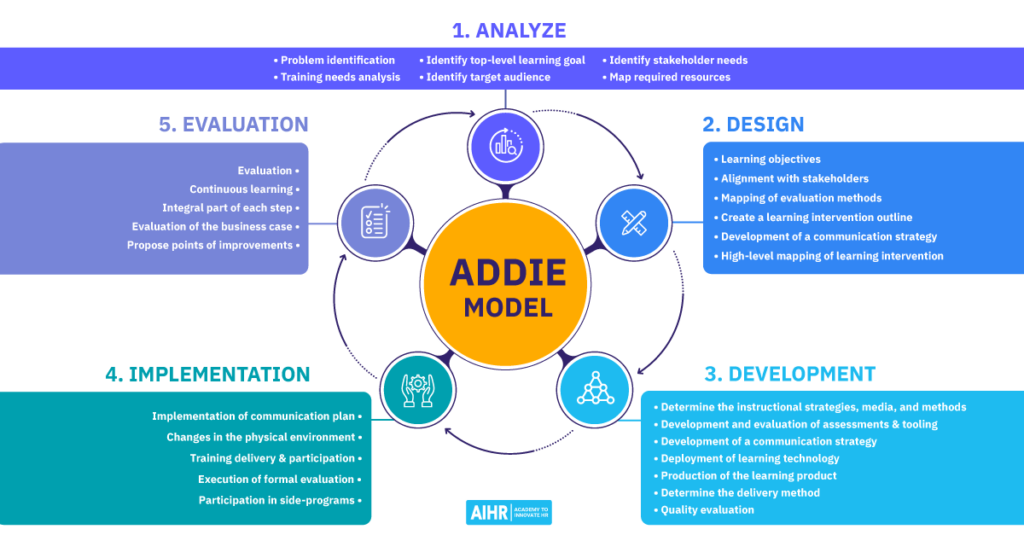military training framework might not be the first thing that comes to mind when designing employee learning solutions. Yet, the ADDIE model has proven its versatility and effectiveness far beyond its initial scope, becoming a cornerstone of instructional design worldwide.


ADDIE is a leading learning development model used for instructional design, which is the complete process of designing, developing, and serving learning content. The model is often used to design training and learning & development programs in organizations.

These are the five stages of the learning development process. ADDIE training model provides a streamlined, structured framework that helps you create an effective learning product, whether that’s delivered through an online or offline training program, a coaching session, a presentation, or an information booklet.
ADDIE helps identify the learning need in a structured way and ensures all learning activities serve that goal, which offers an integrated approach to learning. It also guides measuring learning effectiveness because job behaviors, knowledge, and skills are clearly defined within the framework.
In the ADDIE model, each stage must be carried out in order and carefully considered before moving on. Reflection and feedback at each stage ensure continuous improvement.




The ADDIE model serves as a foundational framework for instructional design, offering a systematic process for creating effective and efficient training programs. There are multiple reasons why companies use the ADDIE model in their instructional design process:
Creating a structured process for instructional design : The ADDIE model provides a clear, step-by-step framework that guides instructional designers through the process of creating educational programs, ensuring that they consider and address all critical aspects of instructional design.
Aligning the instructional activities with learning objectives : By starting with a thorough analysis phase of the ADDIE model, you can fully align all instructional materials and activities with the learning objectives, making it more likely that these objectives will be met.
Facilitating data-driven decision-making : By systematically collecting and analyzing data at each stage, the ADDIE model supports data-driven decision-making, allowing instructional designers to make informed adjustments that enhance the learning experience.
Facilitating effective communication among stakeholders : By providing a common framework, the ADDIE model facilitates clear and effective communication among all stakeholders involved in the instructional design process, including educators, designers, and learners.
Promoting continuous improvement : The evaluation phase of the ADDIE model allows for the collection of feedback and data on the training program’s effectiveness, providing opportunities for continuous improvement and keeping the training relevant and impactful over time.
Enhancing instructional design expertise: The process of continuous evaluation and improvement helps instructional designers and educators to refine their skills and expertise over time, leading to higher-quality educational content and more effective teaching strategies.



